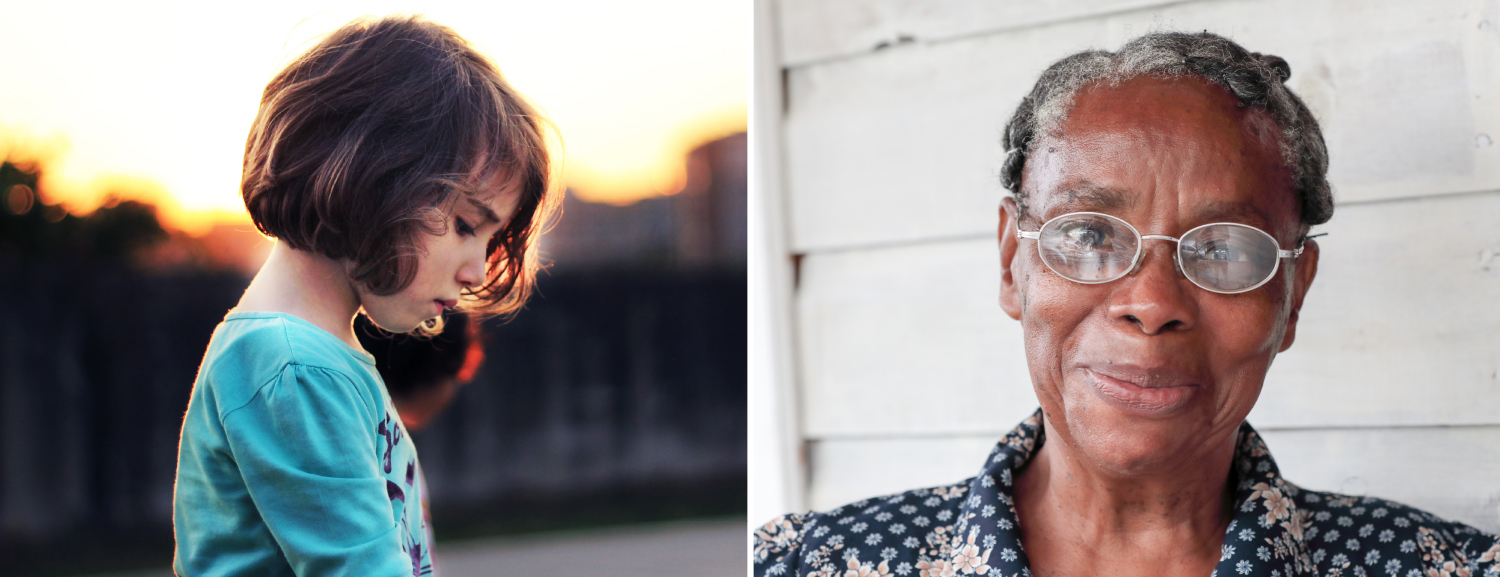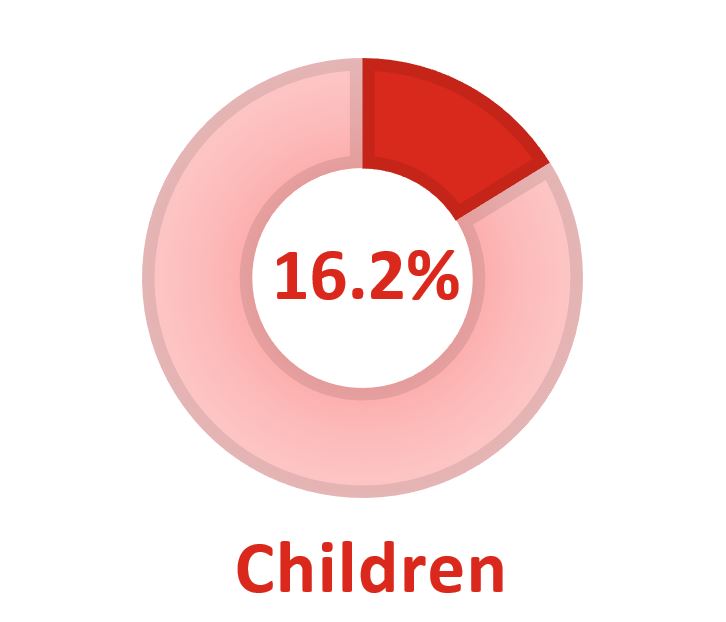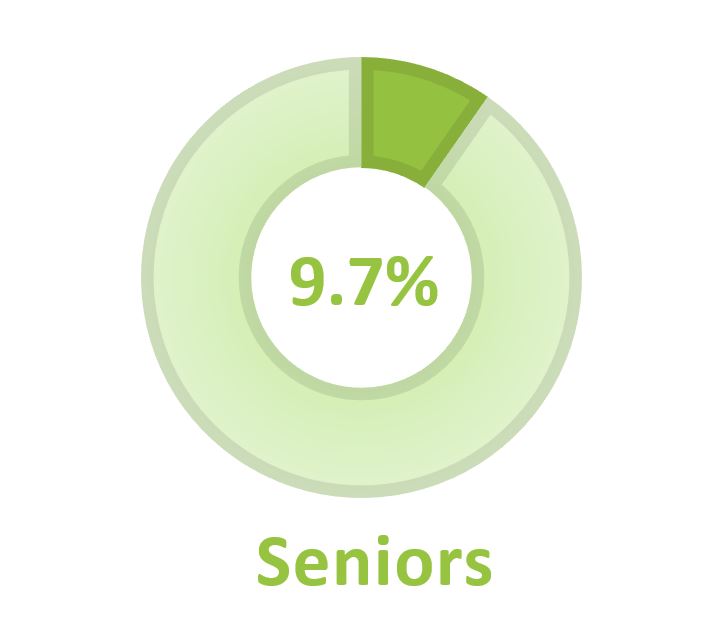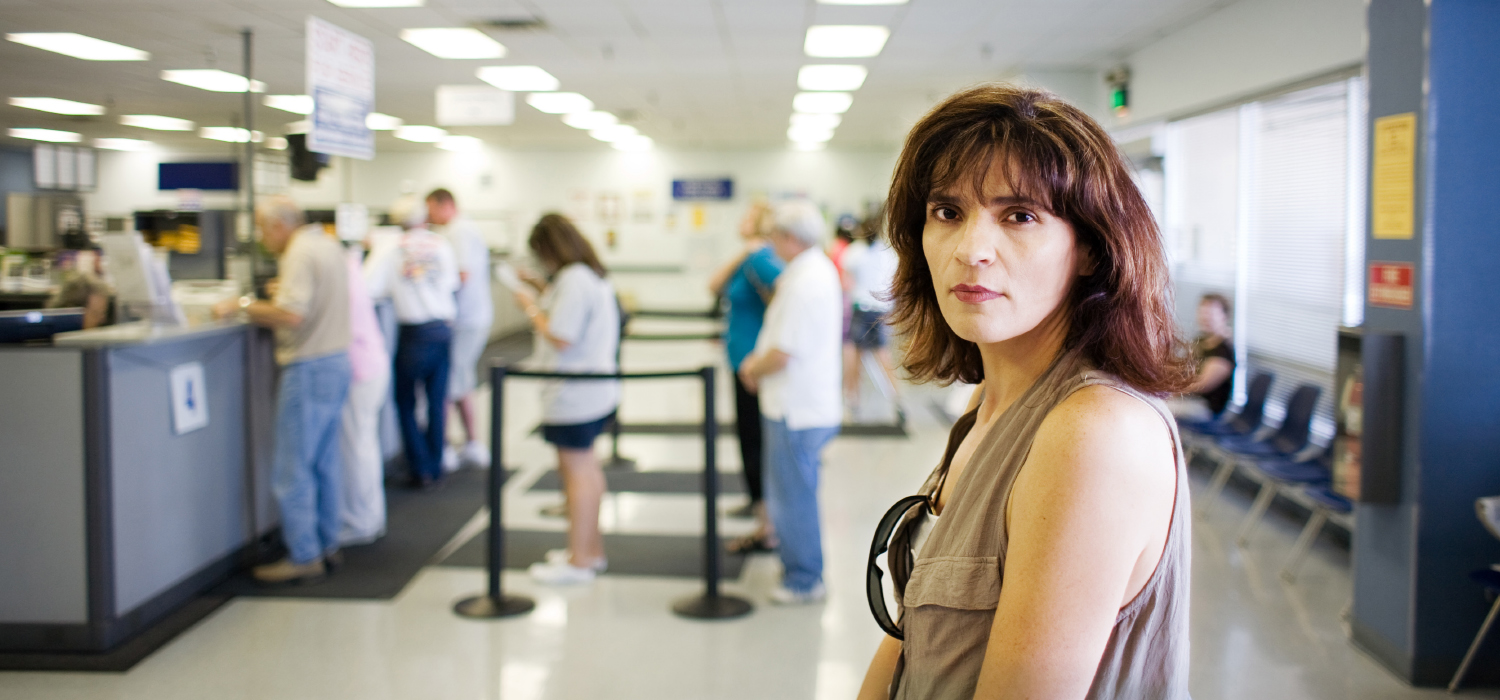| | |
POVERTY FACTS The Population of Poverty USA
In 2018, 38.1 million people lived in Poverty USA. That means the poverty rate for 2018 was 11.8%. Use our interactive map to take a closer look at poverty statistics in the United States.
Who lives in Poverty USA? All those who make less than the Federal government’s official poverty threshold... which for a family of four is about $25,700. People working at minimum wage, even holding down multiple jobs. Seniors living on fixed incomes. Wage earners suddenly out of work. Millions of families everywhere from our cities to rural communities.
 Poverty does not strike all demographics equally. For example, in 2018, 10.6% of men, and 12.9% of women lived in Poverty USA. Along the same lines, the poverty rate for married couples in 2018 was only 4.7% - but the poverty rate for single-parent families with no wife present was 12.7%, and for single-parent families with no husband present was 24.9%. Poverty does not strike all demographics equally. For example, in 2018, 10.6% of men, and 12.9% of women lived in Poverty USA. Along the same lines, the poverty rate for married couples in 2018 was only 4.7% - but the poverty rate for single-parent families with no wife present was 12.7%, and for single-parent families with no husband present was 24.9%.
In 2018, the poverty rate for people living with a disability was 25.7%. That’s nearly 4 million people living with a disability—in poverty.
Poverty by Age 

Children in Poverty In 2018, 16.2% of all children (11.9 million kids) lived in Poverty USA—that’s almost 1 in every 6 children.
In 2015, the National Center on Family Homelessness analyzed state-level data and found that nationwide, 2.5 million children experience homelessness in a year.

Seniors in Poverty Though the official census data gives seniors a 2018 poverty rate of only 9.7%, the Supplemental Poverty Measure, which accounts for expenses such as the rising costs of health care, raises the senior poverty rate to 14.1%.
Poverty by Ethnicity According to 2018 US Census Data, the highest poverty rate by race is found among Native Americans (25.4%), with Blacks (20.8%) having the second highest poverty rate, and Hispanics (of any race) having the third highest poverty rate (17.6%). Whites had a poverty rate of 10.1%, while Asians had a poverty rate at 10.1%.
 The Economics of Poverty Poverty thresholds are determined by the US government, and vary according to the size of a family, and the ages of its members. In 2018, the poverty threshold—also known as the poverty line—for an individual was $12,784. For two people, the weighted average threshold was $16,247. The Economics of Poverty Poverty thresholds are determined by the US government, and vary according to the size of a family, and the ages of its members. In 2018, the poverty threshold—also known as the poverty line—for an individual was $12,784. For two people, the weighted average threshold was $16,247.
Poverty Thresholds
Three people
$19,985
Four people
$25,701
Five people
$30,459
Six people
$34,533
Seven people
$39,194
Eight people
$43,602
Nine or more people
$51,393
For more details about poverty thresholds, visit the US Census Bureau. Poverty thresholds are intended for use as a statistical yardstick, not a complete description of what people and/or families actually need to live.
What’s worse, 5.3% of the population—or 17.3 million people—live in deep poverty, with incomes below 50% of their poverty thresholds.
And 29.9% of the population—or 93.6 million—live close to poverty, with incomes less than two times that of their poverty thresholds. To learn more about poverty thresholds and what it is like to live at the poverty line, take a look at the statistics.
Sources: How the US Census Measures Poverty, US Census Bureau; Income, Poverty, and Health Insurance Coverage in the United States: 2019, US Census Bureau (p. 18-19).
 Employment Following 3 consecutive years of annual increases, the 2018 median household income of $63,179 was not significantly different than the 2017 median. However, the real median income for family households increased by 1.2% and for nonfamily households by 2.4%. In 2018, the median income for family households was $80,663, while the median income for nonfamily households was $38,122. Employment Following 3 consecutive years of annual increases, the 2018 median household income of $63,179 was not significantly different than the 2017 median. However, the real median income for family households increased by 1.2% and for nonfamily households by 2.4%. In 2018, the median income for family households was $80,663, while the median income for nonfamily households was $38,122.
Regarding the people who earned income in 2018, an estimated 76.8% of men and 63.9% of women worked full time, year-round. This combines for a 2% increase from the previous year and continues a shift from part time to full time work status. However, in 2018, the earnings of women who worked full time, year-round were only 81.6% of that for men working full time, year-round.
Source: US Census Bureau; Income and Poverty in the United States: 2019
Food Insecurity The USDA estimated that 11.1% of US households were food insecure in 2018. This means that approximately 14.3 million households had difficulty providing enough food for all their members due to a lack of resources. Rates of food insecurity were substantially higher than the national average for households with incomes near or below the Federal poverty line.
There are programs that help. 56% of food-insecure households in the USDA survey reported that in the previous month, they had participated in one or more of the three largest Federal food and nutrition assistance programs. One of these programs is known as SNAP, or the Supplemental Nutrition Program. Learn more about policies that help.
Source: United States Department of Agriculture, Food Security Status of US Households in 2018
|
|






 Employment Following 3 consecutive years of annual increases, the 2018 median household income of $63,179 was not significantly different than the 2017 median. However, the real median income for family households increased by 1.2% and for nonfamily households by 2.4%. In 2018, the median income for family households was $80,663, while the median income for nonfamily households was $38,122.
Employment Following 3 consecutive years of annual increases, the 2018 median household income of $63,179 was not significantly different than the 2017 median. However, the real median income for family households increased by 1.2% and for nonfamily households by 2.4%. In 2018, the median income for family households was $80,663, while the median income for nonfamily households was $38,122.